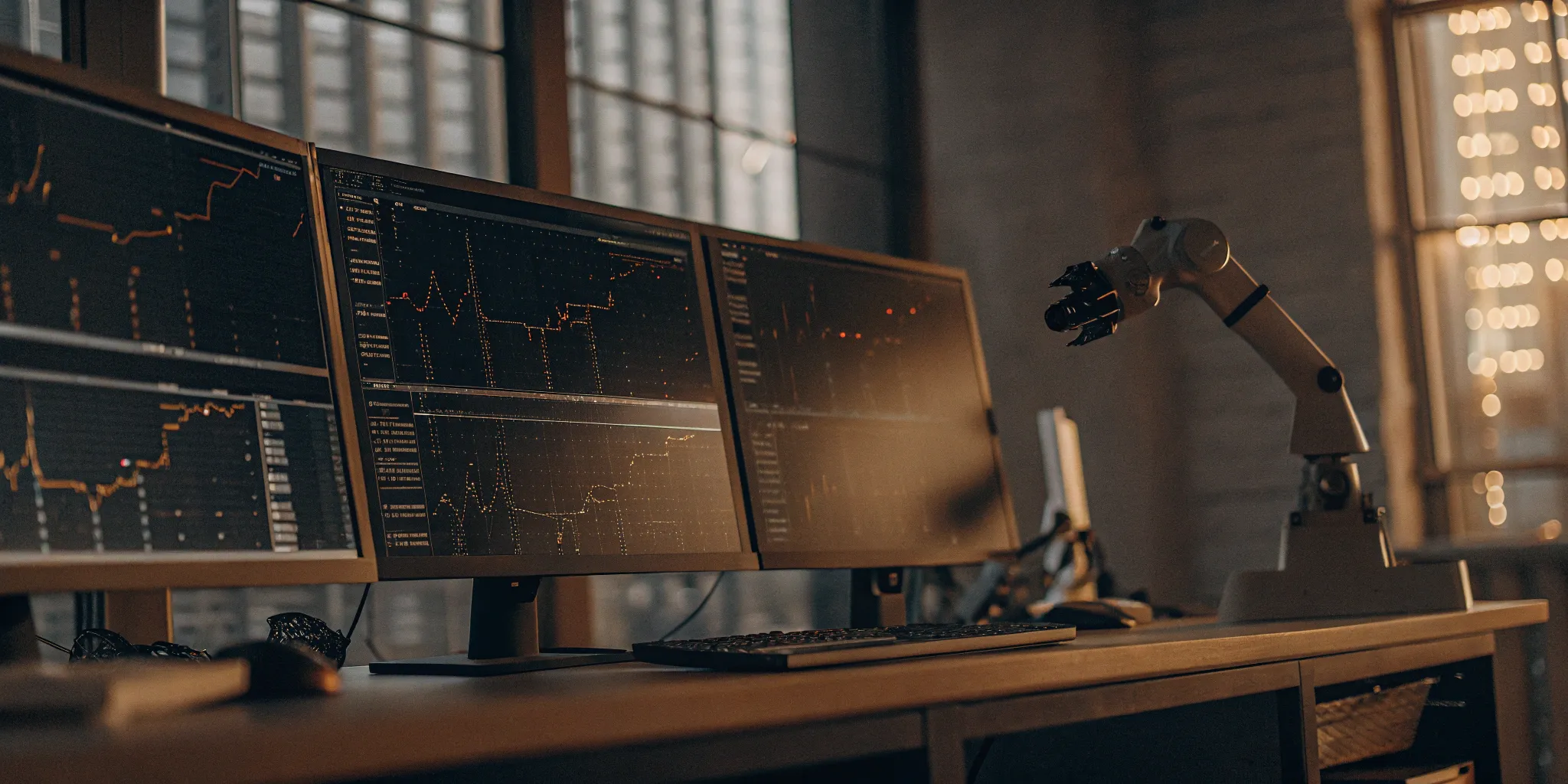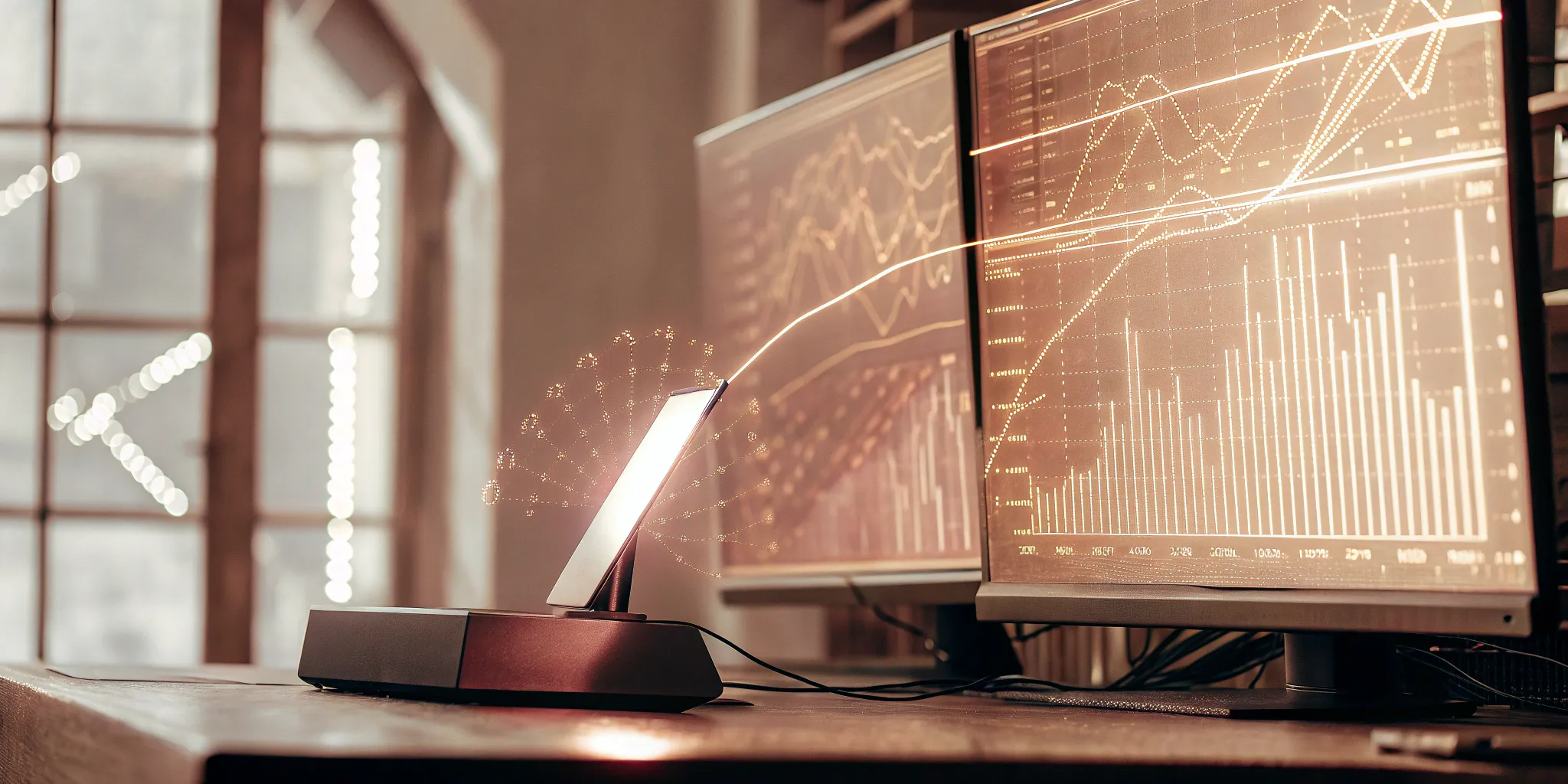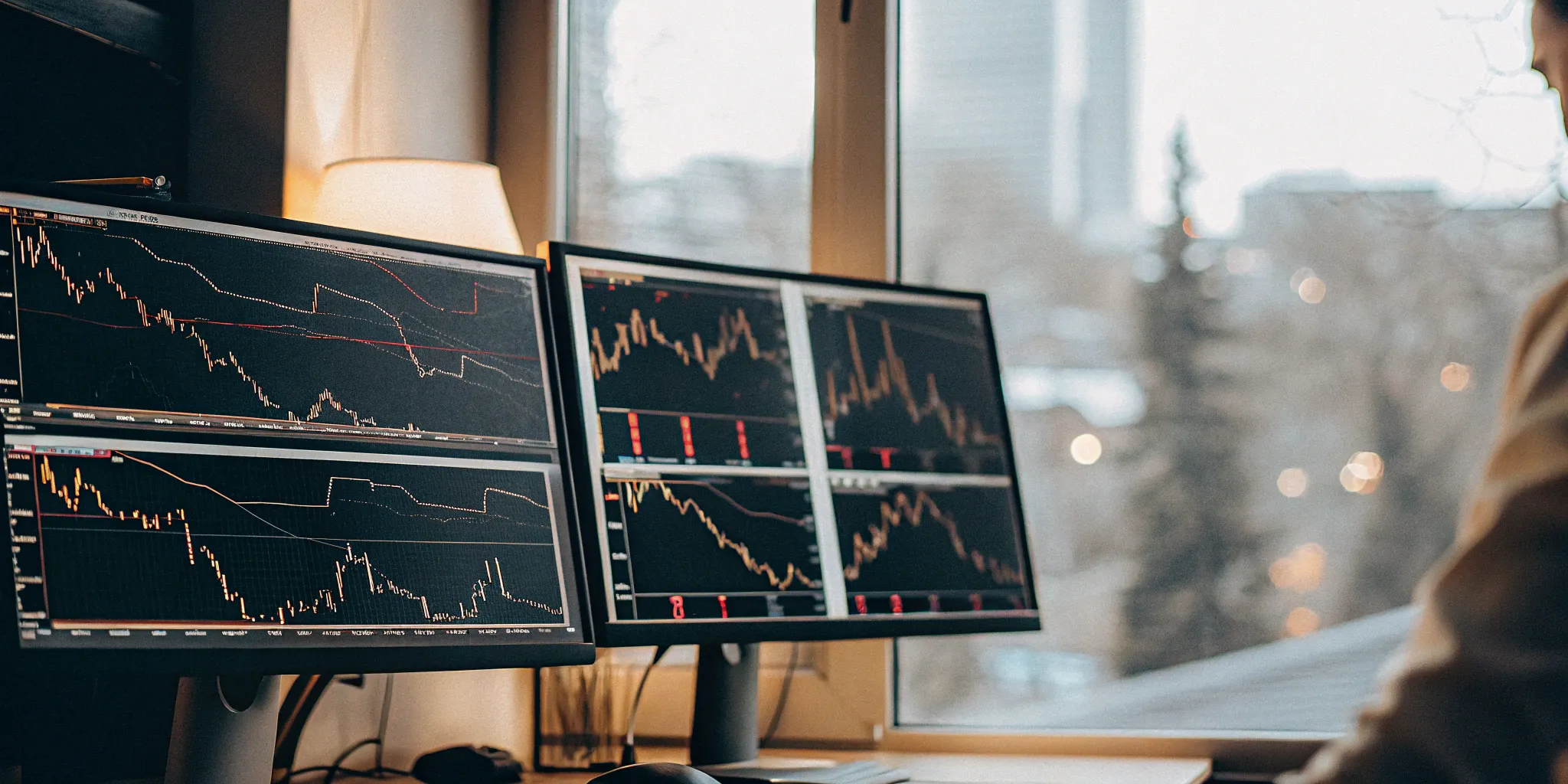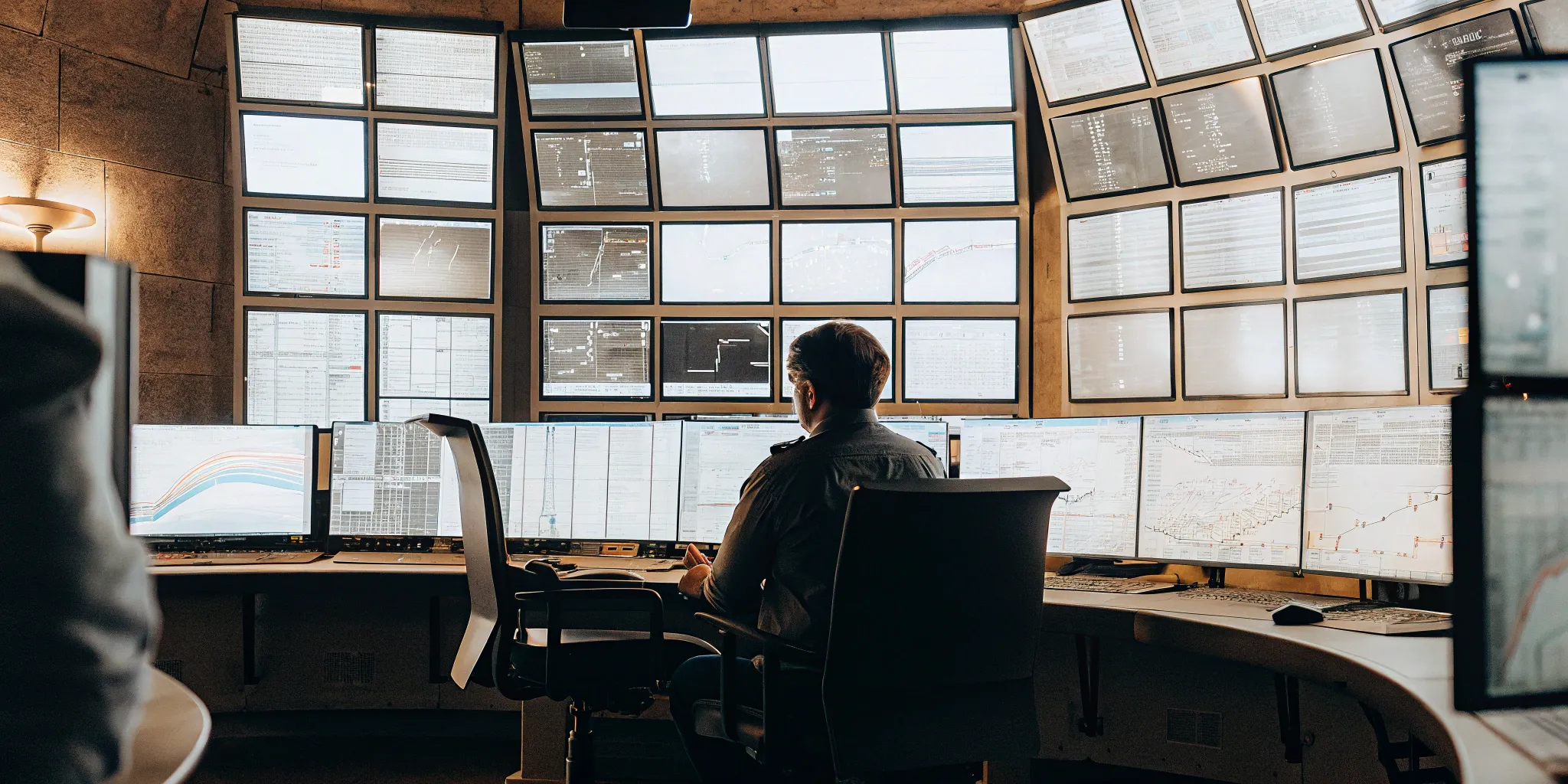Feeling overwhelmed by the constant demands of monitoring the markets? Autotrading offers a solution by automating your investment strategies, freeing you from the need for constant vigilance. By setting predefined rules and letting sophisticated software execute trades on your behalf, you can achieve greater efficiency and potentially improve your returns. This comprehensive guide explores the world of autotrading, covering everything from basic concepts to advanced techniques. We’ll demystify how autotrading systems work, discuss the advantages and potential pitfalls, and provide actionable steps to get started. Whether you’re a beginner or an experienced trader, this guide will equip you with the knowledge to harness the power of autotrading.
Key Takeaways
- Autotrading systems execute trades 24/7 based on your preset rules, removing emotional biases and maximizing market opportunities. This allows for consistent strategy execution, even when you’re not actively monitoring the market.
- Effective autotrading requires a reliable platform, well-defined algorithms, and a robust risk management strategy. Thorough testing, continuous monitoring, and adapting to changing market conditions are essential for success.
- From simple rule-based systems to complex AI-driven algorithms, various autotrading strategies cater to different trading styles and experience levels. Research and understand these strategies to choose the best fit for your goals and risk tolerance.
What is Autotrading?
Autotrading, often called algorithmic trading, uses computer programs to buy and sell investments automatically. Think of it as giving your investment strategy to a robot. You define the rules, such as when to buy or sell based on specific criteria, and the software executes those trades for you. This automation removes the need for manual trading decisions.
Definition and Basics
An autotrading system (ATS) is a computer program that follows pre-defined rules to execute trades. These rules can be based on technical analysis (chart patterns and indicators), fundamental analysis (company performance and news), mathematical algorithms, or a combination of approaches. An ATS compares current market prices to your predetermined buy and sell points. When a match occurs, the system automatically places the order, eliminating manual intervention.
How Autotrading Systems Work
Autotrading requires specialized software, ranging from platforms like ProRealTime and MetaTrader4 to custom-built solutions using APIs. You create a trading plan within your chosen platform with specific instructions. For example, you might instruct the system to “Buy 100 shares of Apple if the price crosses $180 and the 50-day moving average is above the 200-day moving average.” The software continuously monitors the market and executes your trades when these conditions are met. This automated execution ensures precision and removes emotional biases from trading decisions.
Benefits of Autotrading
Autotrading offers several advantages for all types of traders. Let’s explore some key benefits:
Trade Efficiently, 24/7
Picture a system that executes trades around the clock, even while you’re asleep or focused on other things. That’s autotrading in action. Automated trading systems can buy and sell investments 24/7, following your preset rules. It’s like having a dedicated trading assistant working tirelessly. This lets you react instantly to market changes, maximizing opportunities and making more trades than possible manually. This constant monitoring is especially valuable in fast-moving markets like forex. For example, you can set up automated trades based on specific price movements or news events, ensuring you never miss a potential opportunity, even when you’re away from your computer. This 24/7 availability can significantly enhance your trading efficiency.
Reduce Emotional Decisions
Emotions can sometimes lead to impulsive decisions, especially when money is on the line. Fear and excitement can derail even the most well-thought-out trading plan. Autotrading helps neutralize this emotional element. By following pre-defined rules and algorithms, you avoid emotional trading pitfalls, leading to more disciplined and consistent results. This objectivity is a game-changer for traders who find it challenging to maintain discipline. For instance, if your strategy dictates selling when a stock reaches a certain price, the automated system will execute the trade regardless of any anxieties you might feel about missing out on further gains.
Analyze Data Better
Markets generate enormous amounts of data every second. Analyzing this data effectively is key to identifying profitable trades. Autotrading systems excel at this. They rapidly process vast quantities of data, using sophisticated algorithms to pinpoint patterns and trends a human might overlook. Some systems use techniques like “look-up tables” to accelerate decision-making, enabling quick responses to market fluctuations. This data-driven approach helps you make more informed trading decisions, potentially improving your outcomes. For example, an autotrading system can analyze historical price data, trading volume, and other relevant indicators to identify potential entry and exit points for trades, giving you a data-backed edge in the market.
Essential Autotrading System Components
Trading Platforms and Software
A reliable trading platform is your foundation for autotrading. Think of it as your command center. You’ll use this software to develop, backtest, and deploy your automated trading strategies. Some platforms, like MetaTrader4 or ProRealTime, offer a range of built-in tools and indicators. Alternatively, you can explore APIs to create a custom platform tailored to your specific needs. Choosing the right platform depends on your coding skills, preferred markets, and the complexity of your strategies. Services like FN Capital handle the technical side, using AI to simplify forex autotrading for everyone from beginners to experienced investors.
Develop and Optimize Algorithms
Algorithms are the brains of your autotrading operation. They contain the rules and logic that dictate your trading decisions. Remember, algorithmic trading isn’t a specific trading style, but a method for executing any strategy using computer programs. Whether you’re a day trader, swing trader, or long-term investor, you can automate your approach. Developing effective algorithms often involves coding, backtesting historical data, and rigorously testing your strategies in simulated environments. This process requires time, effort, and a solid understanding of market dynamics.
Manage Risk
Automating your trades doesn’t eliminate risk. In fact, it can introduce new challenges. Automated systems can execute trades rapidly, which can magnify losses if your rules are flawed. A common pitfall for beginners is jumping into autotrading without sufficient research and understanding. A well-defined risk management plan is crucial. This includes setting appropriate position sizes, stop-loss orders, and taking profits at defined targets. Continuously monitoring your system’s performance and adjusting your algorithms as needed is essential for long-term success in autotrading.
Popular Autotrading Strategies
Autotrading strategies range from simple rule-based systems to complex algorithms powered by machine learning. Here are a few core approaches:
Trend Following
Trend following seeks to profit from the momentum of price movements. Traders using this strategy buy assets trending upwards and sell those trending downwards. The core principle is to follow the market’s direction. This can lead to significant profits if the trend continues. However, trend following can also result in losses if a trend suddenly reverses. Solid risk management is crucial for this strategy.
Mean Reversion
Mean reversion operates on the idea that prices and returns eventually move back toward their average. This strategy involves identifying overbought or oversold market conditions and betting that prices will revert to their historical averages. Traders using mean reversion typically buy low and sell high. This strategy performs best in stable markets and can be less effective during periods of high volatility or strong trends.
Arbitrage
Arbitrage exploits price discrepancies between different markets or forms of an asset. It involves simultaneously buying and selling an asset to profit from the price difference. This strategy demands quick execution and often relies on automated trading systems to capitalize on fleeting opportunities. While arbitrage can offer near risk-free profits, the opportunities are often small and may require substantial capital for significant returns.
Potential Autotrading Risks and Challenges
While autotrading offers significant advantages, it’s essential to understand the potential risks and challenges. Knowing these pitfalls will help you approach automated trading realistically and develop strategies to mitigate potential issues.
Software Errors and Glitches
Automated trading systems rely on software, and software can have bugs. These glitches can range from minor inconveniences to significant disruptions. A misplaced decimal point in your trading algorithm could result in unintended trade sizes, while a more serious error could cause a complete system malfunction. Even large-scale systems are vulnerable, as evidenced by events like the 2010 “Flash Crash,” partly attributed to automated trading systems. Thorough testing and robust error handling are crucial to minimizing software-related problems.
Market Volatility and Unexpected Events
Markets are inherently unpredictable. Unexpected news, economic shifts, or global events can create sudden volatility that automated systems may not handle well. A system designed for stable market conditions could make a series of losing trades during periods of high volatility. Additionally, complex instruments like Contracts for Difference (CFDs) carry inherent risks. Understanding these risks and incorporating appropriate safeguards into your automated strategies is essential.
Strategy Limits and Overoptimization
Developing a profitable autotrading strategy requires careful backtesting and optimization. However, over-optimizing a strategy to fit historical data perfectly can lead to poor performance in live trading. Past performance doesn’t guarantee future results, and a historically successful strategy may not adapt to new market conditions. Finding the right balance between optimization and robustness is key to a sustainable autotrading strategy.
Start Autotrading: A Beginner’s Guide
Getting started with autotrading can feel daunting, but by breaking it down into smaller steps, you can confidently begin automating your trades. Here’s a roadmap to get you started:

Choose the Right Platform
Your autotrading platform is your command center. It’s where you’ll develop, test, and deploy your automated trading strategies. Choosing the right platform is crucial. Some platforms cater to specific asset classes or trading styles, while others offer broader functionality. Research various platforms like MetaTrader 4 or ProRealTime, considering factors like ease of use, available tools, and supported markets. If you have coding skills, building your own platform using APIs might give you maximum flexibility. The key is to select a platform that aligns with your trading goals and technical expertise.
Set Up and Test Algorithms
With your platform chosen, it’s time to define the rules that will govern your automated trades. These rules, codified into algorithms, are the brains of your autotrading system. Start by outlining a clear trading plan with specific entry and exit conditions. Your rule could be as simple as, “Buy 100 shares of Apple if the price crosses above $175.” Most platforms offer tools to translate these rules into algorithms. Before risking real capital, rigorous testing is essential. Use historical data or a simulated trading environment to evaluate how your algorithm performs under various market conditions. This helps you identify and fix any flaws before going live.
Paper Trade and Evaluate Performance
Think of paper trading as a dress rehearsal for your autotrading system. It lets you test your strategies in a risk-free environment using virtual money. This is where you put your theories to the test and see how your algorithms perform in real-time market simulations. Carefully monitor the results, paying attention to metrics like win rate, average profit/loss, and maximum drawdown. Thorough research and understanding of the market and your chosen platform are crucial during this phase. Analyzing your paper trading performance helps you fine-tune your algorithms and gain confidence before deploying them with real funds.
Avoid These Autotrading Mistakes
New to autotrading? It’s easy to get started, but sidestep these common pitfalls first.
Research and Educate Yourself
Before diving into autotrading, understand the forex market, trading strategies, and your chosen platform. A solid foundation is key. Don’t jump in without researching different automated trading systems and understanding how they work. Learn about the specific algorithms involved and their potential limitations. Resources like Forex Academy offer helpful tips and guides for beginners.
Don’t Over-Rely on Automation
Autotrading simplifies trading, but staying informed about market conditions is crucial. It isn’t a “set it and forget it” solution. Regularly monitor your system’s performance and make adjustments as needed. Keep an eye on market news and events that could impact your trades. Remember, even with automation, your oversight is essential. Beginner’s guides offer valuable insights into finding the right balance between automation and active management.
Manage Risk
Protecting your investment is paramount in autotrading. Implement robust risk management strategies from the start. Define your risk tolerance and set appropriate stop-loss orders to limit potential losses. Diversify your trades and avoid putting all your eggs in one basket. Continuously evaluate and adjust your risk management plan as market conditions change. Resources like Advanced Auto Trades offer insights into the pros and cons of autotrading and the importance of risk management.
Advanced Autotrading and Future Trends
As markets evolve, so does autotrading. Staying ahead means understanding how emerging technologies shape automated trading strategies. Let’s explore some key advancements and what they mean for the future of autotrading.
Machine Learning and AI in Algorithms
Machine learning and AI are transforming how autotrading algorithms are built and deployed. These technologies can analyze vast datasets, identify complex patterns, and adapt to changing market conditions much faster than traditional rule-based systems. Platforms like Trade Ideas offer AI-powered bots that constantly scan the US stock market for opportunities, executing trades with speed and precision. This shift toward AI-driven decision-making is creating more sophisticated and responsive autotrading systems. FN Capital offers a comprehensive guide covering the latest advancements in AI-powered trading solutions.
Multi-Asset and Cross-Market Autotrading
Advanced autotrading now encompasses multi-asset and cross-market strategies. This allows traders to diversify their portfolios and capitalize on opportunities across various asset classes, including stocks, forex, and commodities. Sophisticated algorithms can identify correlations and arbitrage opportunities between different markets, executing trades seamlessly across platforms. FN Capital’s automated trading system uses AI to simplify forex trading, offering a hands-free approach for investors of all levels.
Emerging Tech and Regulations
The future of autotrading is intertwined with emerging technologies like blockchain and decentralized finance (DeFi). Blockchain can enhance transparency and security in automated transactions, while DeFi opens up new possibilities for decentralized exchanges and peer-to-peer trading. However, these advancements also bring new regulatory challenges. As autotrading becomes more complex and interconnected, regulators are working to establish frameworks that ensure market integrity and protect investors. Profitability in algorithmic trading hinges on several key factors, including robust backtesting, validation, and risk management, as highlighted by Quantified Strategies’ research. Staying informed about these evolving regulations is crucial for anyone involved in autotrading.
Choose the Right Autotrading Solution
Finding the right autotrading solution is crucial for success, whether you’re a beginner or a seasoned trader. A platform packed with the right features and a clear understanding of your needs sets you up for a smoother experience.
Key Features for Beginners
New to autotrading? Focus on user-friendly platforms. A clean interface, clear instructions, and readily available educational resources are essential. Before diving in, take the time to grasp how the forex market and different trading strategies work. Understanding the system you’re using is key—don’t rely on automation without knowing the mechanics behind it. Look for platforms that offer demo accounts or simulated trading so you can practice and gain confidence before risking real money. Solid research and a good understanding of the market are essential for success in autotrading.
Compare Autotrading Platforms
Once you’re comfortable with the basics, explore different autotrading platforms. Consider factors like pricing, available features, the types of assets you can trade, and the level of customer support offered. Reading reviews and comparing platforms side-by-side can help you identify potential issues and choose a system that aligns with your goals. Thorough research is essential. Look for platforms with transparent fee structures and a proven track record. Consider whether you need advanced features or a more streamlined approach.
FN Capital‘s AI-Powered Autotrading
FN Capital offers an AI-powered autotrading solution designed to simplify forex trading. Our proprietary FAST AI algorithm executes trades autonomously, removing emotional bias and allowing you to trade 24/5. We focus on the EUR/USD pair for maximum liquidity and efficient execution. Our DART risk management system continuously adapts to market conditions, optimizing position sizes and stop-loss orders. Whether you’re a beginner looking for a hands-free approach or an experienced investor seeking advanced AI-driven strategies, FN Capital offers a range of solutions to meet your needs. Explore our automated trading guide to learn more.
Related Articles
- How to Make Money with Automated Trading: A Practical Guide – FN Capital – Like a Bank, But Smarter
- Top 7 Algorithmic Trading Platforms Reviewed: Insights & Features
Frequently Asked Questions
Is autotrading suitable for beginners? Absolutely! Autotrading can be a great tool for beginners. Many platforms offer user-friendly interfaces and educational resources. Starting with a demo account lets you practice with virtual money before risking real capital. Focus on understanding basic trading principles and choosing a platform that aligns with your learning style. Services like FN Capital further simplify the process by handling the technical complexities of forex autotrading with AI.
What are the key components of a successful autotrading system? A robust autotrading system needs a reliable trading platform, well-defined algorithms, and a solid risk management plan. The platform is your command center for developing and deploying strategies. Algorithms, the system’s “brains,” contain the rules governing your trades. Risk management, including position sizing and stop-loss orders, protects your capital from unexpected market fluctuations.
How do I choose the right autotrading platform? Consider your experience level, trading goals, and preferred markets. Beginners might prioritize user-friendly interfaces and educational resources, while experienced traders might seek advanced charting tools and API access. Look for platforms with transparent pricing, robust security measures, and reliable customer support. Researching and comparing different platforms is crucial to finding the best fit.
What are the most common autotrading mistakes to avoid? Lack of research and education is a major pitfall. Understand the markets you’re trading and the specifics of your chosen platform before automating anything. Over-reliance on automation without monitoring market conditions is another mistake. Autotrading isn’t entirely hands-off; staying informed and adjusting your strategies as needed is crucial. Finally, neglecting risk management can lead to significant losses. Always implement stop-loss orders and diversify your trades.
What is the role of AI and machine learning in the future of autotrading? AI and machine learning are transforming autotrading by enabling more sophisticated and adaptive algorithms. These technologies can analyze vast datasets, identify complex patterns, and adjust to changing market conditions faster than traditional rule-based systems. This shift toward AI-driven decision-making is paving the way for more efficient and responsive autotrading solutions.





